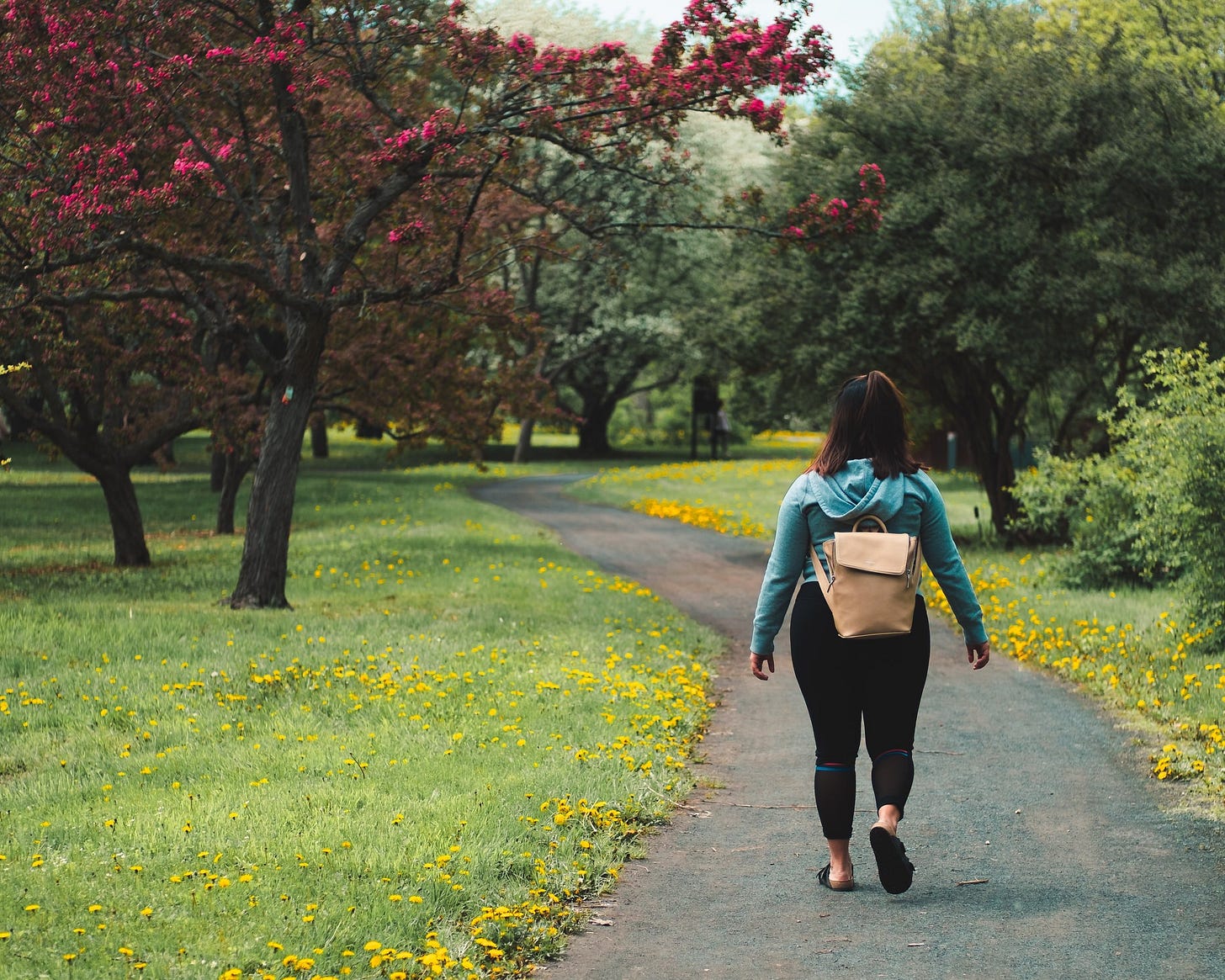These days, I need more than my morning meditation practice to help me stay present. I feel more spacious and even hopeful about the upcoming election than I did a few weeks ago. But there is also anxiety because the outcome is so important to me. I find myself checking election polls online more frequently than is helpful. It's not uncommon to resort to checking behaviors, like obsessing over polls, to bind discomfort, but these behaviors have the opposite effect. They aren't a helpful coping mechanism for the discomfort that arises from uncertainty.
During my morning meditation, I notice a low level of restlessness, an experience I recognize as leaning into the future. Meditation is helpful even when it is difficult to be present. Because I notice that it is more challenging to be still internally, I can do something about it. Incorporating more pausing practices throughout my day helps.
Is anyone else feeling tense about the upcoming election or noticing that it is challenging to be present? If so, I thought I'd offer the kind of pausing and noticing exercises that might help in the upcoming months.
Pausing and noticing what is happening internally offers alternate ways of moving through discomfort by being more present. Pausing practices generate more internal spaciousness and stillness.
Exercise: Simply Noticing is an Important Pause
Walk around the block with the intention to notice. You might first notice what comes to you visually. You might notice subtler things like the experience of your body as you are walking, the sensation of your feet touching the ground, and the feeling of the breeze as it touches your face, moves your hair, or rustles your clothes. You might notice the smells on the street: exhaust, food from storefronts, and fresh air. Notice your response to the smells. Can you let the smells come and go?
The same goes for sounds: birds, car radios, engines, radios, and people talking. Can you let them, too, come and go? Notice the absence of sounds and the alteration between near and distant sounds. Notice when your attention turns inward to thought. Can you gently bring yourself back to noticing what is around you?
As you notice this wide variety of stimuli, you will likely associate with what you are experiencing, get distracted and think about what happens later in the day, or find some mental escape other than the one right here. This practice is to bring yourself back, again and again, to what you notice while walking.
It can be challenging to remain present during the simple, non-emotionally laden task above. Imagine how difficult it is when we desperately want a particular outcome.
Reflection
What are your challenges to pausing and being still? When you are uncomfortable, what do you turn to? Distraction? Zoning out? Finding something else to do? Ask yourself these questions and try to notice what is happening as it is happening. For example, if you find yourself turning to distraction, can you gently try to redirect your attention or do something other than a typical automatic response?
There are two kinds of pausing practices. The first kind is to step back from your daily routines and habits of mind. This might look like taking breaks throughout your day—such as the above walking around the block exercise. It might also look like turning off your phone for an hour, taking a nap, or closing your eyes and taking three slow, easy breaths. A longer pause could be taking a vacation to rest and recharge.
The second kind of pause is more subtle. This pause is noticing what is happening as it happens. This kind of practice is a moment-by-moment mindfulness practice. The first type of pause helps to cultivate the transformative, in-the-moment kind of pause. The second kind of pause, the practice of noticing what is happening as it happens, is the heart of all mindfulness practices. I'll call this the Mindful Pause; the stillness that it creates is grounding and enables us to access our internal resources.
One of the most helpful pausing practices is to anchor yourself in your breath. Throughout the day, step back from what you are doing and place your attention on the inhale and exhale of your breath for about thirty seconds.
In the coming months, we can consistently practice pausing every day and throughout the day. This sounds simple, yet it is a radically different approach to how we often go about our days.
When you practice the second kind of in-the-moment pausing, recognize it. Especially notice those moments when you have stepped back from distraction or other habitual ways of responding. Building up the capacity to pause more of the time centers us and helps us be present.
Exercise: Pausing and Breathing
Try this exercise twice a day for a month. It only takes a few minutes and offers tremendous benefits if you stay with it. Until this practice becomes an automatic part of your day, schedule it. Find a relatively quiet place to practice.
To start, either close your eyes or pick a point a few feet in front of you on which to comfortably direct your gaze. Then, take five easy, full breaths and place your awareness on each in-breath and out-breath.
After taking five easy breaths, shift your awareness to what is happening inside you. Notice the physical sensations. Watch them come and watch them go. Notice thoughts that arise. Don't chase them or push them away. Watch them come and watch them go. Notice what feelings come up or if you experience comfort or discomfort. Watch all your experiences come and go.
Stay in this stillness for a full two minutes. After two minutes, take a couple more breaths, allowing your attention to extend to the room. Return to your day with the freshness of pausing and tapping into your internal resources.






Thank you. I needed this.